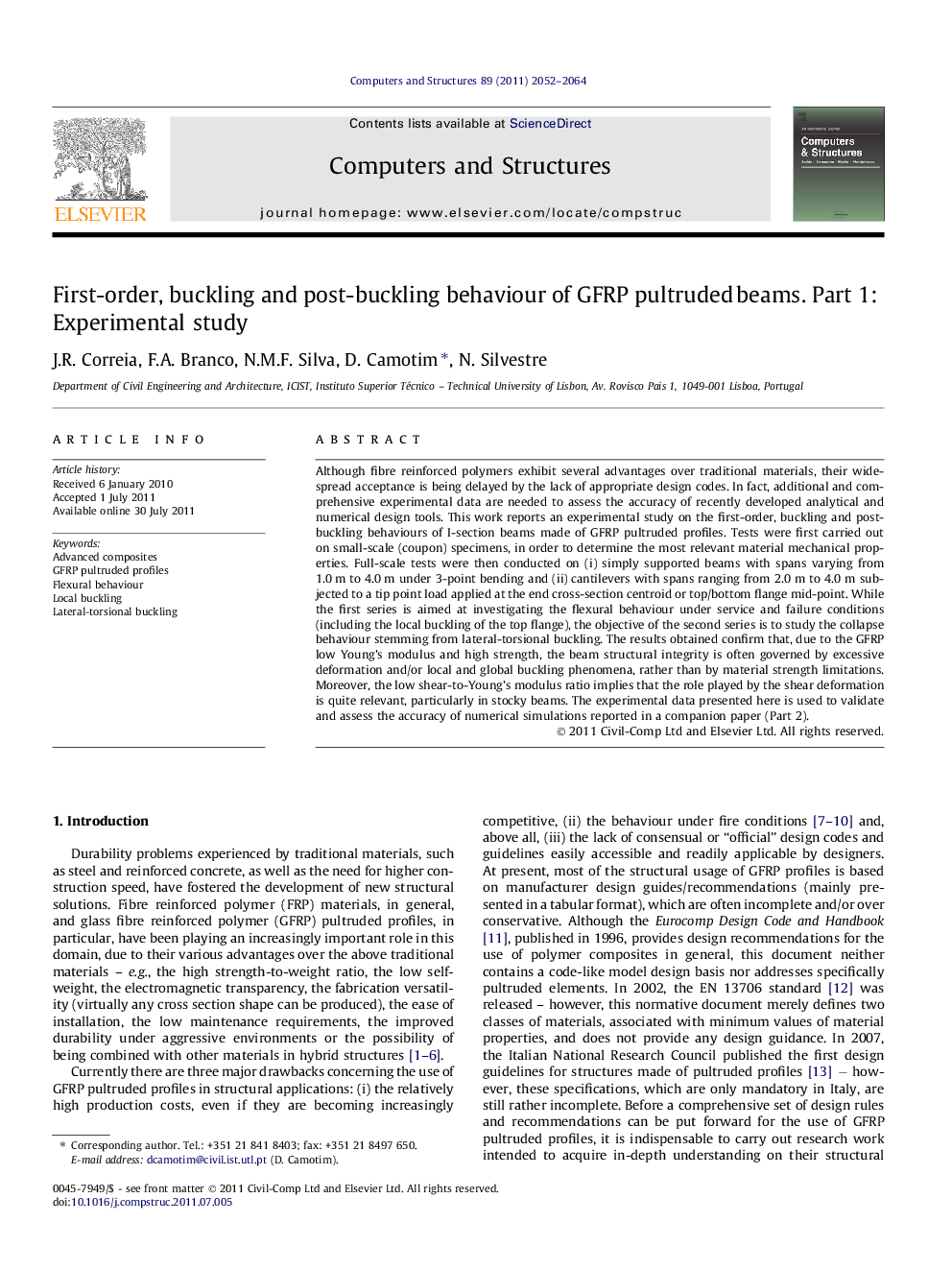| Article ID | Journal | Published Year | Pages | File Type |
|---|---|---|---|---|
| 509865 | Computers & Structures | 2011 | 13 Pages |
Although fibre reinforced polymers exhibit several advantages over traditional materials, their widespread acceptance is being delayed by the lack of appropriate design codes. In fact, additional and comprehensive experimental data are needed to assess the accuracy of recently developed analytical and numerical design tools. This work reports an experimental study on the first-order, buckling and post-buckling behaviours of I-section beams made of GFRP pultruded profiles. Tests were first carried out on small-scale (coupon) specimens, in order to determine the most relevant material mechanical properties. Full-scale tests were then conducted on (i) simply supported beams with spans varying from 1.0 m to 4.0 m under 3-point bending and (ii) cantilevers with spans ranging from 2.0 m to 4.0 m subjected to a tip point load applied at the end cross-section centroid or top/bottom flange mid-point. While the first series is aimed at investigating the flexural behaviour under service and failure conditions (including the local buckling of the top flange), the objective of the second series is to study the collapse behaviour stemming from lateral-torsional buckling. The results obtained confirm that, due to the GFRP low Young’s modulus and high strength, the beam structural integrity is often governed by excessive deformation and/or local and global buckling phenomena, rather than by material strength limitations. Moreover, the low shear-to-Young’s modulus ratio implies that the role played by the shear deformation is quite relevant, particularly in stocky beams. The experimental data presented here is used to validate and assess the accuracy of numerical simulations reported in a companion paper (Part 2).
